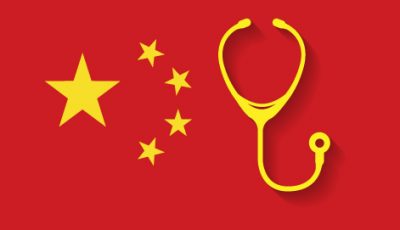By
Dan Marshall-Singh
The historical evolvement of China’s health care system can be roughly divided into four set periods; BC2100-1949, 1949-1979, 1979-2009 and 2009-Present. How has the healthcare system changed though these four periods and has it adjusted accordingly to China’s mass population growth and rapid economic development?
The first recorded era of Chinese health care is BC2100–1949. During this time there was no structured health care and this was the lowest level of care, however it was private, affordable and accessible to many people. Due to the non-structured healthcare system, many doctors were untrained and relied heavily on traditional Chinese medicine and The Yellow Emperors Inner Canon which is considered to be the source for traditional Chinese medicine. Because of the traditional element, diagnosis was based on a systemic and philosophical framework which included the four basic skills – observing, asking, hearing and touch. Qi (energy) and xue (blood circulation) were key points and kept in check with diet and acupuncture. Traditional Chinese religion also played a part in healthcare and one was reminded to keep ones health in balance with accordance to Daoist philosophy.
With the establishment of The Peoples Republic of China in 1949, this brought a new socialist model to Chinese healthcare. This was also the first time in China’s history that the government had offered any kind of formal healthcare and saw an introduction of western style medicine being used. The period of 1949–1969 also saw major changes in China, including Mao’s Cultural Revolution which impacted greatly on the healthcare system. This saw the addition of Barefoot Doctors, who were farmers that received very basic medical training and worked in the rural villages of China. Their main purpose was to care for the villagers and promote good health practices; the name Barefoot Doctors originates from Southern farmers where they would work barefoot in the rice fields due to the hot weather. This period also saw a dualistic three tiered network dividing the urban and rural population, the main difference being that urban settler’s healthcare was covered by the labour and government insurance and a rural person’s healthcare was a commune based cooperative medical scheme.
The third period of reform 1979–2009 saw many changes. Medical education improved greatly and many modern hospitals were built in China’s now developed cities, but this came at a cost. From 1979 free universal healthcare was abolished and nearly every citizen had to pay for all medical cover. Because of this, 48.9% of people didn’t seek medical care from 1979–2009. Being that the majority of China’s wealthy population lived in the cities, 80% of medical recourses were there, leaving the rural population to still use barefoot doctors. In the year 2000, China’s healthcare system was measured fourth worst in the world and this lead to the last and final reform.
In 2009 the new and current healthcare reform was introduced. This period saw the reintroduction of universal social insurance cover which has proved very popular with China’s population. In line with many developed nations, China has also established a National Drugs Research programme and is now a growing hub for healthcare research and development. Many provinces and cities have been given greater autonomy in providing healthcare, making it easier for authorities to give the services needed for local people. China’s next goal is to provide equal access and a high level of healthcare for every citizen.
With its vast population, China has made significant improvements in its healthcare system including decreasing infant mortality rates and increasing life expectancy. But with rural to urban migration putting a strain on urban hospitals, and rural hospitals still under funded, is China ready for its next reform?



No Comments Yet!
You can be first to comment this post!